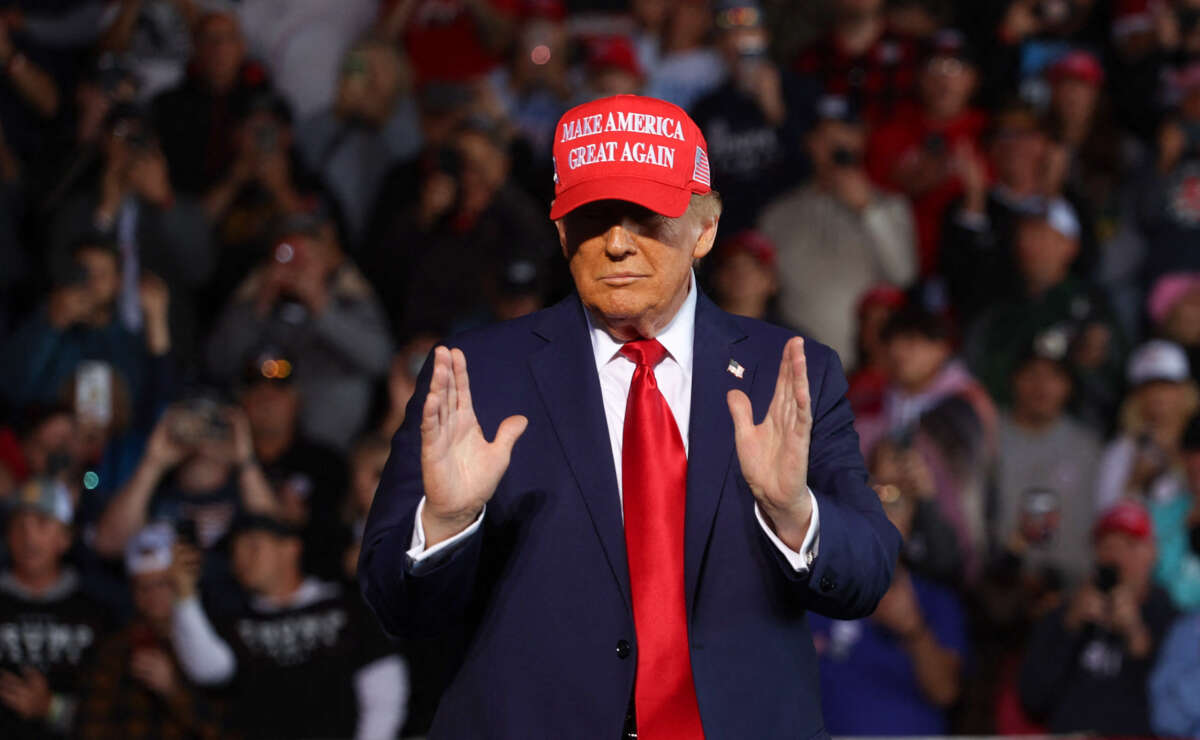A new report examining former President Donald Trump’s proposed tax policy finds that it would raise taxes on every working class American while cutting taxes substantially for the wealthiest 5 percent.
The report, entitled “A Distributional Analysis of Donald Trump’s Tax Plan,” was produced by the Institute on Taxation and Economic Policy (ITEP). Its conclusions directly contradict the Trump campaign talking point that he would cut taxes for all Americans.
The ITEP analysis makes clear that the tax increases will burden middle class Americans and people with lower income levels.
“Taken together, these proposals would, on average, lead to a tax cut for the richest 5 percent of Americans and a tax increase for all other income groups,” the report states.
A person earning around a $60,000 salary, for instance, is considered part of the “middle 20 percent” of income earners by the ITEP report. Within that category of workers, individuals can expect, on average, a tax increase of $1,530. And for income earners in the lowest 20 percent of wages (those earning $28,800 and lower per year), taxes would increase by an average of $790 per year.
Meanwhile, the top 5 percent of income earners come out with tax breaks under the Trump plan, with people earning between $360,000 and $914,900 annually seeing their taxes decrease by around $7,160 on average. The top 1 percent of wage earners (those earning above $914,900 per year) would see their taxes cut by a whopping $36,320 on average.
As a result, the lowest 20 percent of wage earners in the U.S. will see a 4.8 percent increase in their taxes, proportional to their income, with the middle 20 percent of wage earners seeing around a 2.1 percent increase. The top 5 percent of income earners will see between a 1.2 percent and a 1.3 percent decrease in taxes as a percentage of their income, on average, per the study.
Per the ITEP report, most of the tax cuts for the ultra rich would come from an extension of the 2017 tax law that Trump and Republicans passed while he was in office, which also focused primarily on decreasing taxes for the wealthy. The bulk of the increase on lower income earners will come from Trump’s plan to impose tariffs on goods from foreign countries, particularly China, a policy he insists those countries will pay for. In reality, the costs would be passed onto consumers.
Throughout much of the presidential campaign season, voters have preferred Trump on economic matters. However, his standing with voters on the economy has diminished greatly since Vice President Kamala replaced President Joe Biden as the Democratic Party’s 2024 presidential nominee.
Indeed, in a newly released Data for Progress poll, Harris leads Trump on a number of measures, including on the question of who is more trustworthy on taxation policy for middle class Americans, with 51 percent preferring her to 42 percent preferring Trump on the issue.
In fact, Harris leads Trump on nine economic “trust” measures, per the poll, while he is only ahead of her in three measures.
“These findings suggest that Harris has been effective at improving voters’ perception of how she would handle various economic issues, including top issues like reducing inflation, and by extension, reducing the cost of housing and groceries,” Data for Progress said in its analysis of its polling data.
We’re resisting Trump’s authoritarian pressure.
As the Trump administration moves a mile-a-minute to implement right-wing policies and sow confusion, reliable news is an absolute must.
Truthout is working diligently to combat the fear and chaos that pervades the political moment. We’re requesting your support at this moment because we need it – your monthly gift allows us to publish uncensored, nonprofit news that speaks with clarity and truth in a moment when confusion and misinformation are rampant. As well, we’re looking with hope at the material action community activists are taking. We’re uplifting mutual aid projects, the life-sustaining work of immigrant and labor organizers, and other shows of solidarity that resist the authoritarian pressure of the Trump administration.
As we work to dispel the atmosphere of political despair, we ask that you contribute to our journalism. Over 80 percent of Truthout’s funding comes from small individual donations from our community of readers, and over a third of our total budget is supported by recurring monthly donors.
You can help by giving today. Whether you can make a small monthly donation or a larger gift, Truthout only works with your support.
